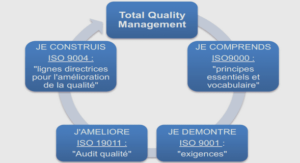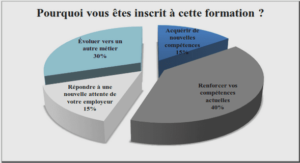A Contrastive Study of English and Seereer-Siin Determiners
Theoretical Justification
Contemporary linguistic studies have since adopted a theoretical approach to the conceptualization of linguistic features. According to Plag (2003:165), a theory 4 D. Westerman and J. Ward: Pratical Phonetics for Students of African Languages, London, Oxford University Press, 1933,p.4. 27 is“a coherent set of hypothetical, conceptual and pragmatic principles forming the general frame of reference for inquiry…” Theories enable linguists to study any language, since a theory guides procedures, assessments, analysis and notation during documentation. This study gets insights from Contrastive Approach. The strong version of Contrastive Analysis claims that the differences between L1 and L2 structures results in negative transfer due to the transfer of old habits into new ones. However, this version of CA (contrative analysis) is only predictive in nature and is not always true. Errors made by learners give us better insights into the process of language learning. Due to this, errors are now regarded as a very important tool for diagnostic purposes in language teaching. An outline of the recent evolution of conceptions, ideas and research on this area helps us to conceive how and why language teaching nowadays has come to focus on the leaner and the leaning process. According to the CAH (Contrastive Analysis Hypothesis), errors occur as a result of interference when the learners transfer native language habits into the L2. It was also believed that interference takes place whenever there is a difference between native mother tongue and the target language. A hypothesis based on Lado’s suggestion in linguistic across cultures where he states « in the comparison between native and foreign language lies the key to ease all difficulties in foreign language leaning » (Lado, 1971). Lado underlined the tight relation between Contrastive analysis and language teaching; although it constitutes an important contribution to language teaching, to date Contrastive Analysis is just one more among a number of analyses. In fact, it limits itself to providing us with didactic information. The most important contribution of this kind of analysis is the delimitation of second language structures which obstruct leaning. Based on this information, it is possible to make decisions concerning teaching. In fact, it is the knowledge of the difficulties resulting from the difference between first language structures and target language ones which permits the development of efficient strategies to face error.
Organization of the Study
To carry out with this work, a functional approach of linguistic analysis would be necessary. It has much to do with the description of the two languages the first task being then the gathering of sampled utterances that is to say a corpus that will constitute the subject of the study. This approach is derived from that of Guelpa who asserts that linguistics aims all aspects of language and anything tackling its functioning. He defines language as a science, a knowledge structured and organized according to some satisfactory methods for the spirit corresponding to the observation of facts and leading to inference or teachings drawn from these observations. As said Guillaume, “on explique selon qu‟on a su comprendre et on comprend selon qu‟on a su observer”. The explanation depends on the understanding of the scientist, but this understanding, in turn, depends on how he observes the phenomenon under analysis. First observation should therefore be taken as the starting point of the process of explanation. The results of this first observation must be submitted to another sound and deep scrutiny Since a language is structured and analyzed according to its different categories, the constituents or operators of the English and Seereer grammatical categories would be analyzed into both formal and functional constituents. The present study is organized as follows: The thesis is composed of five parts. The first part is the theoretical part. It consists of two chapters. The first chapter starts with an introduction dedicated to identifying the purpose and motive behind this study, highlighting its significance and the research questions.Chapter two presents a review of the literature in two sections: The Contrastive Analysis Hypothesis, Error Analysis . In accordance with the comparisons being made in the present study between the English and Seereer determiners to predict learning difficulties. This chapter commences with a discussion on the subject of the Contrastive Analysis 29 Hypothesis. The literature viewpoint about this hypothesis and the criticisms that it encountered are presented. The second part consists of two chapters dedicated to English and Seereer noun morphology. In this part we will see how words are formed in English and Seereer. In the third part we will try to give a thorough description of the determiner system of both English and Seereer, to find out if the two languages have the same structures, whether those structures are used differently, and if the latter are similarly distributed. The description of the determiner systems of Seereer and English is all the more important as it helps us single out the differences at each level of both languages, and from this perspective, predict the difficulties that Seereer learners may encounter when they learn English as a second language. So, the fourth part tackles the contrastive study. At this level the two systems will be matched together so as to find out similarities and differences between Seereer and English determiners. This happens to be easy when there are some similarities and difficulties when there are some differences. The task will not consist only of pointing out the difficulties that might come out of those differences. We have also to suggest solutions to those problems. In the last chapter, suggestions will be made at each level in order to help the teacher and students overcome the predicted difficulties The last part is about data analysis and discussion. Subsequently, in the first chapter, we will present the field work and data collection procedure. Here we will have a composition test to see the difficulties that Seereer learners may encounter when learning English. Moreover, the factors that account for those difficulties will be identified. In the last chapter, we will confine ourselves to the pedagogical implications, by suggesting solutions to the difficulties underscored in the precedent chapter.
Leterature Review
This chapter provides an overview of two areas: Contrastive Analysis Hypothesis (CAH), and the system of noun determination both in English and Seereer. The first section discusses the ContrastiveAnalysis Hypothesis (CAH) in terms of its strong and weak versions. This study is seeking to undertake a contrastive analysis of noun determination in English and Seereer, in terms of their forms and uses. The analysis is undertaken in order to discover the similarities and differences between them. Based on the differences between the two languages, the study will determine if the difficulties and errors that L2 learners may make can be predicted. A comparative L1/L2approach is potentially useful in the present study, as it could show the difficulties that Seerreer learners may face when learning the English determiners. The second section reviews the vast literature already in existence concerning the system of noun determination. It starts with investigating determination in English paying special attention to its diverse functions.It continues to consider the system of noun determination in Seereer clarifying its syntactic functions and effect in meaning. 2.2.Contrastive Analysis Hypothesis According to Lado, Individuals tend to trasfer the forms and meanings and the distribution of forms and meanings of their native language and culture to the foreign language and culture.. . (Lado, 1957:2) This assumption shows the necessity to predict errors as the tendency to transfer was there. Lado, quoting Fries, says that. 31 the most effective materials are those that are based upon a scientific description of the language to be learned, carefully compared with a parallel description of the native language of the learner . (Lado, 1957:1) Contrastive Analysis Hypothesis is one of the pioneering efforts into second language acquisition (SLA) research. It was first produced by Charles Fries (1945, cited in Brown, 2000) and then developed by Lado (1957) and has been defined by a number of linguists. For example, Lado defined CA as: A comparison between two languages, namely, the learner‟s first language L1 and the second language L2 in terms of ease and difficulty where similarities and differences between L1 and L2 affect the nature of acquisition. That is, learning is easy when there are similarities in the structures of languages. Conversely, when the structures differ, difficulties arise in learning and result in errors 5 Another definition was provided by Brown (2000) who defined CA as“ studies of contrast between the native language and the target language which specifically examines the effect of native on target language.”6 Lado claimed that the difficulty with L2 acquisition could be predicted through the differences between L1 and L2. Moreover, CA is related to behaviourism which theorizes that language development is habit formation and supposes that second language learners commence second language learning with habits formed in L1 and which interfere with L2 (Lightbown and Spada, 2006, p. 34). In addition, Skinner (1957) supported this view. He claimed that language learning entails habit formation. Habits are developed when learners react to stimuli in 5 Robert Lado ,LinguisticsAcross Cultures, 1957,p.9. 6Brown,Principles of language learning & teaching (2000, p. 207) 32 the environment and their replies are reinforced so that they are remembered. All behaviour (such as the behaviour found in the process of language acquisition) could be described in terms of habits. Contrastive analysis is based on a theory of language that claims that language is habit and that language learning involves the establishment of a new set of habits. The major source of error in the production and / or reception of a second language is the native language. One can account for errors by considering differences between the L1 and the L2. The greater the differences, the more errors that will occur. What one has to do in learning a second language is learn the differences. Similarities can be safely ignored as no new learning is involved. In other words, what is dissimilar between two languages is what must be learned. Difficulty and ease in learning are determined respectively by differences and similarities between the two languages in contrast. Gass and Selinker (1994: 60) According to this thesis, learning takes place when learners have a chance to practice and make the correct response to a given stimuli. Students imitate representations of correct language (stimuli). The reinforcement they receive is positive when the representations are correct and negative when the representations are incorrect. Moreover, with regards to CAH, it is claimed that difficulties which arise whilst learning L2 can be mainly due to mother tongue interference. This assumption relates to transfer of native habits into the target language. Two types of transfer referred to by CAH are presented below. 2.3.Transfer (L1 Interference) in Second Language Acquisition 33 Behaviourism and CAH define transfer in terms of habit formation, but transfer is presented differently by a number of linguists. Universal Grammar (UG), which was developed by Chomsky (1965), posited innate constraints on transfer. Learners use appropriate L2 because they are guided by UG and they use appropriate L2 parameter values through the input. However, learners‟ use of inappropriate parameter values is due to the L2 parameter values which are already fixed in the learners‟ first language. Thus, when the target parameter values are similar to those of L1, the input confirms them easily. Likewise; when the target parameter values differ from those in L1, the learners reset them and incorrectly transfer their L1 parameters. Odlin (1989, p.27) defined transfer as:“the influence resulting from the similarities and differences between the TL [target language] and any other language that has been previously acquired.”7 The transfer may facilitate the process of learning through similarities between languages; and these similarities may assist the easy mastering of another language, whereas differences between two languages may cause complications resulting in errors. Brown (2007, p. 117), in the same way, Odlin defined transfer as:“the interaction of previously acquired linguistic and/or conceptual knowledge with the present learning event to facilitate a new language learning.”8 For example, Seereer learners of English may produce a sentence such as (the book red). This could be due to the influence of their mother tongue as in the Seereer linguistic system the noun comes always before the adjective. Such an influence may lead learners to transfer the rules of their first language negatively and employ them in L2. Transfer can be divided into two poles: negative transfer and positive 7Odlin, T. 1989. Language Transfer: Cross-linguistic Influence in Language Learning.Cambrige: CUP. 8 OPCIT 34 transfer.Negative transfer refers to the use of previous linguistic knowledge in producing a second language which results in undesirable forms. It occurs when the L1 form used in L2 production is not part of the L2 norm, and the resultant utterance is erroneous. This kind of transfer hinders learning and performing appropriate target language forms. Positive transfer, by contrast, takes place when a native form is used in the production of a second language. It is part of the L2 norm and hence, facilitates learning process. For a number of researchers (e.g. Corder, 1981; and Krashen, 2002), negative transfer of learners‟ first language can be one of the major causes of errors. For instance, Corder stated that: One explanation of second language errors is that the learner is carrying over the habits of his mother tongue into the second language. This is called interference and the implication of this term can only be that his mother tongue habits prevent him in some way from acquiring the habits of the second language 9 Moreover, the results of a number of studies (e.g. Corder 1981; Scott, 1997; Cook, 2001; Upton, 2001; Sarko, 2009; Ionin & Montrul, 2010) reveal that transfer has a role in L2 acquisition. These studies show that L1 has an impact (either positive or negative) on L2 in the fields of phonology, morphology and semantics. When L2 learners transfer L1 properties which are different from L2, learning problems may arise. For instance, the result of Sarko‟s study (2009), which was conducted on French learners of English, reveals that French learners use the definite article in a similar manner to English native speakers. Their transfer of L1 patterns to L2 was positive, the reason being that the French language has similarities with English in the use of article systems. Therefore, they may transfer grammatical patterns from their L1 to L2 and this transfer result is positive when there are similarities between the two languages and negative when 9Corder, S. P. (1981). Error Analysis and interlanguage. Oxford: Oxford University Press.p.24. 35 there are differences. Hence, such studies claim that transfer plays a significant role in the process of acquisition. However, there are controversial views on the subject of the role of transfer in L2 acquisition.Theories such as Full Access (without transfer) Hypothesis argue that L1 grammar is not the basis for the acquisition of L2, thus, there is not an L1 transfer in L2 acquisition. The results of a number of studies (e.g. Dulay & Burt, 1972; Kasper, 1992; Ellis, 1994; Cao, 2001; Sabourin, 2003) support this view. For example, Dulay and Burt claimed that L1 has no impact on L2 acquisition as the latter is facilitated by UG principles. They argue that the errors made by L2 learners are developmental errors, (within the target language) rather than interlingual errors, (interference from learners‟native language).
PART ONE: Research Questions and Theoretical Framework |



